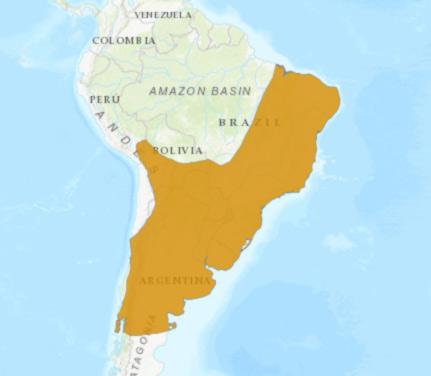Lesser Grison
Galictis cuja
Taxonomy
Standard English Name
Lesser Grison
Scientific Name
Galictis cuja
Brazilian common name/s
Furão-pequeno
Conservation status - IUCN
Physical Description
They are small animals, with a length of 50 to 70 cm and weigh 1 to 3 kg. G. vittata is slightly larger than G. cuja. The coat is very characteristic, where the face, neck region and limbs are black and back is gray. The boundary between the two colours is delineated by a white band that extends from the head to the side of the neck .They have very elongated body with short legs. These animals are extremely agile and are strong swimmers and climbers.
Ecology and Habitat
The geographical distribution of both species from this genus is still unclear. G. vittata occurs mainly in the north of Brazil, but the southern limits of its range have yet to be defined. G. cuja occurs in the central-southern part of the continent and north-east Brazil. G. cuja inhabits forests and open areas, including secondary habitats, living in tree trunks or rocks, in burrows that they dig. They are active both day and night and are often seen in pairs or small groups (probably families), who communicate through vocalizations.
Their diet includes small mammals, birds and their eggs, reptiles and amphibians, insects and fruit.
Online links
IUCN redlist (http://www.iucnredlist.org) presents a synthesis of current knowledge about distribution and conservation status.
References
Michalski, F., Crawshaw, P. G., de Oliveira, T. G., & Fabian, M. E. (2007). Efficiency of box-traps and leg-hold traps with several bait types for capturing small carnivores (Mammalia) in a disturbed area of Southeastern Brazil. Revista De Biologia Tropical, 55, 315-320.
Reid, F., & Helgen, K. (2008). Galictis cuja. In: IUCN 2010. IUCN Red List of Threatened Species. Version 2010.2. <www.iucnredlist.org>, , Downloaded on 05 July 2010.
Yensen, E., & Tarifa, T. (2003). Galictis cuja. Mammalian Species, 728, 1-8.
